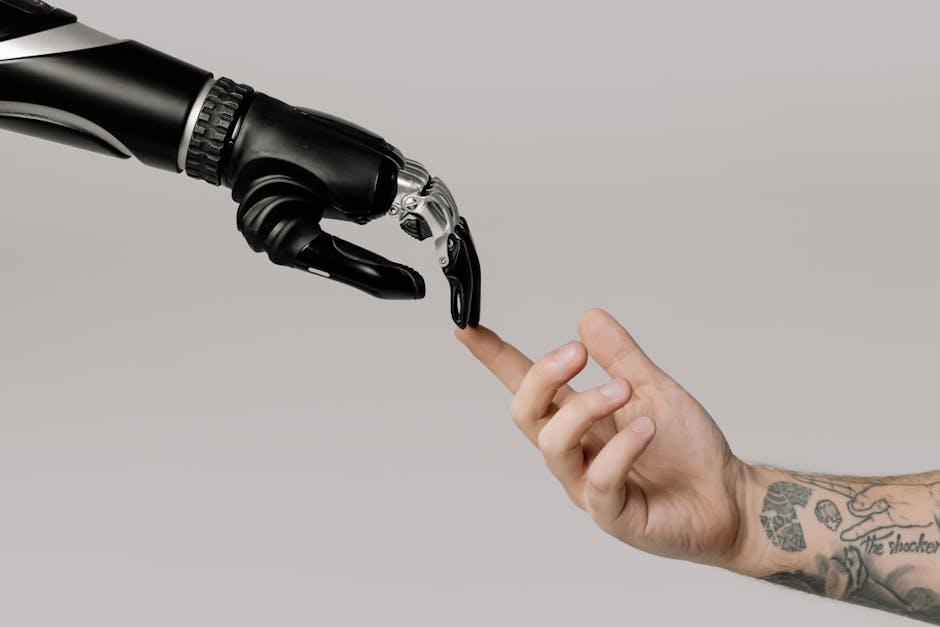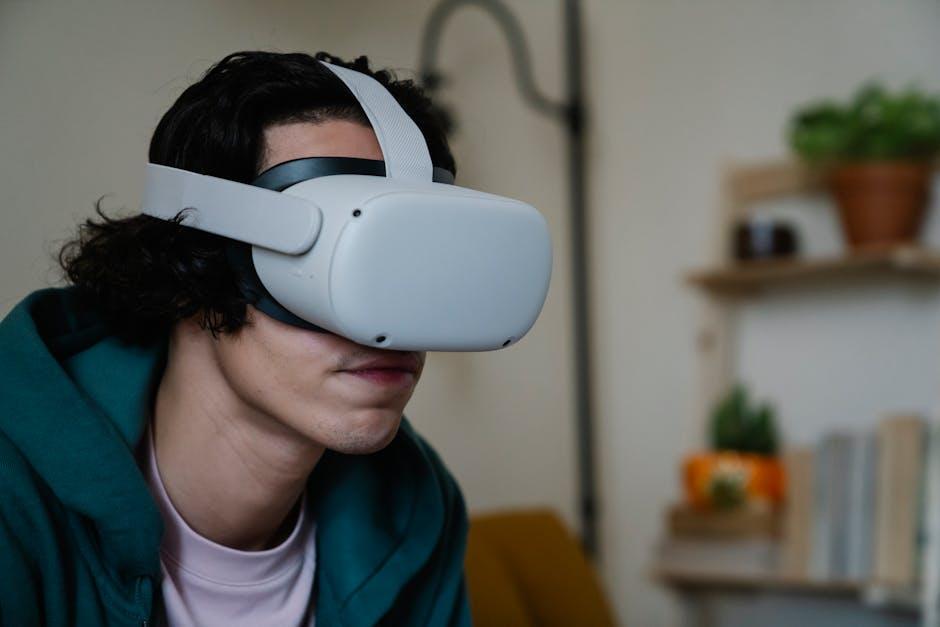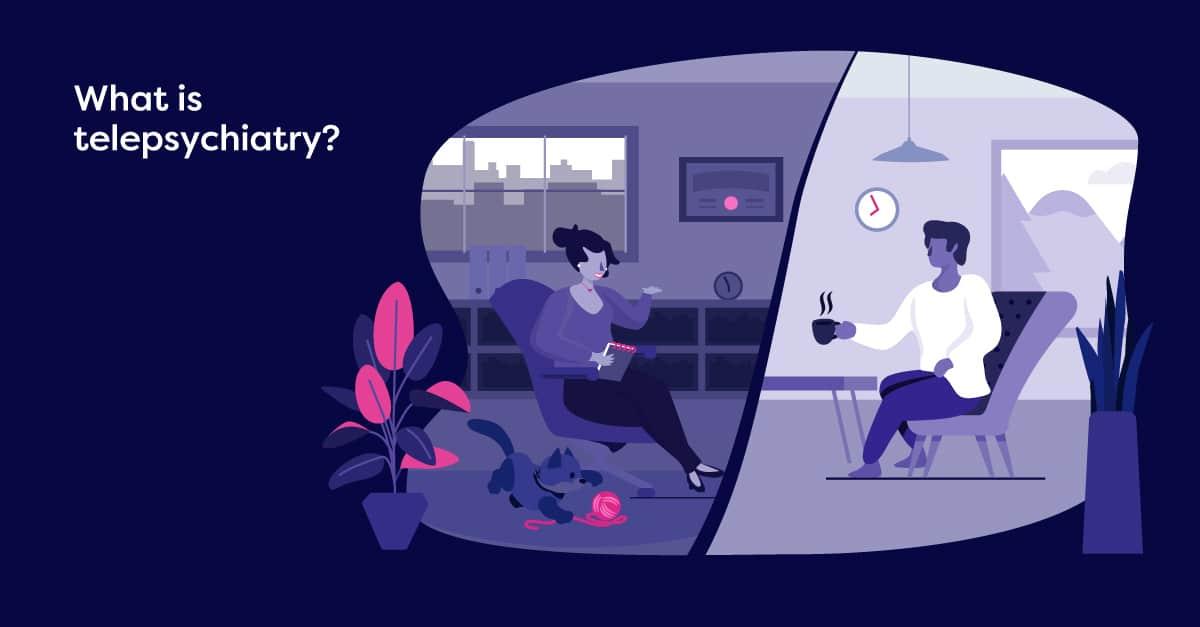In recent years, the mental health landscape has experienced a paradigm shift, driven by rapid advancements in technology. This article delves into the intricate interplay between cutting-edge technological innovations and traditional therapeutic frameworks, illuminating how digital tools are reshaping the way mental health services are delivered and consumed. From artificial intelligence (AI)-powered diagnostic tools to virtual reality (VR) therapies and mobile health applications, these breakthroughs promise to augment, if not redefine, the efficacy and accessibility of mental health care. As we navigate through the complexities of integrating these technologies into mainstream practice, it becomes imperative to critically evaluate their potential, limitations, and the ethical considerations they entail. Join us as we explore the frontier of tech-driven mental health interventions, moving beyond the conventional realms of counseling and medication toward a future where technology becomes an integral partner in psychological well-being.
Emerging Digital Therapeutics: Transforming Mental Health Care Delivery
Digital therapeutics are leveraging technology to provide a new dimension of care in mental health. Mobile applications, virtual reality, and AI-driven chatbots are among the innovative tools breaking barriers of traditional therapy. These digital aids offer personalized treatment plans, instant access to resources, and continual monitoring of progress. For instance, apps designed to assist with cognitive behavioral therapy can provide real-time feedback and exercises, enabling patients to practice stress-management techniques anywhere, anytime.
Another exciting development is the use of virtual reality (VR) to recreate therapeutic environments, aiding in the treatment of conditions like PTSD and phobias. The realistic simulations allow patients to confront and manage their fears in a controlled setting. Moreover, AI-driven chatbots, programmed with therapeutic knowledge, can offer 24/7 support, answering questions and providing comfort when human therapists are unavailable. This integration of technology not only makes mental health care more accessible but also enhances the patient’s engagement in their own treatment process.
| Technology | Application | Benefits |
|---|---|---|
| Mobile Apps | Cognitive Behavioral Therapy | Anywhere, Anytime Access |
| Virtual Reality | Exposure Therapy | Controlled Environment |
| AI Chatbots | 24/7 Support | Immediate Assistance |

AI and Machine Learning: Pioneering Personalized Mental Health Treatments
Utilizing AI and machine learning, healthcare professionals can now offer tailored mental health treatments that were unimaginable a few years ago. These advanced technologies analyze vast amounts of data, such as patient history, treatment responses, and even social media activity, to identify patterns and trends. This data-driven approach helps in creating personalized treatment plans that can significantly improve therapy outcomes. Moreover, AI algorithms can monitor patient progress in real-time, allowing therapists to adjust treatments dynamically.
Some key benefits of AI and machine learning in mental health services include:
- Predictive capabilities: AI can forecast potential crises before they occur.
- 24/7 support: Chatbots provide continuous support, especially during off-hours.
- Remote monitoring: Wearable devices track mental health indicators round-the-clock.
| Feature | Benefit |
|---|---|
| AI Chatbots | Immediate, round-the-clock mental health support |
| Predictive Analytics | Early identification of potential mental health crises |
| Wearable Devices | Continuous monitoring of mental health indicators |

Wearable Technology: Monitoring and Enhancing Mental Well-being
Wearable technology isn’t just keeping us healthier physically; it’s also making strides in mental well-being. Modern wearables can monitor variables like heart rate, sleep patterns, and even stress levels. These devices collect data and provide insights that can help users understand their mental state better. By integrating biofeedback mechanisms, they can even suggest exercises, like breathing techniques or mindfulness activities, which can theoretically reduce anxiety and improve mood.
Newer wearables are advancing even further, incorporating features such as thermal imaging to detect emotional changes or electrodermal activity (EDA) sensors to measure how sweaty your skin gets, which is another sign of stress. Some devices can connect to mobile apps that track your progress over time, giving users a more interactive and guided experience. Here are some examples:
- Smartwatches: Track daily activity, heart rate, and remind you to take mindfulness breaks.
- Smart Rings: Monitor sleep quality and stress levels discreetly.
- Headbands: Provide real-time feedback during meditation sessions.
| Device | Main Feature | Health Benefit |
|---|---|---|
| Smartwatch | Heart Rate Monitoring | Stress Reduction |
| Smart Ring | Sleep Tracking | Better Sleep Quality |
| Headband | Meditation Feedback | Enhanced Focus |

Telepsychiatry and Virtual Therapy: Expanding Access and Flexibility in Mental Health Services
Telepsychiatry and virtual therapy are transforming how we access and receive mental health services. They leverage technology to connect patients with mental health professionals virtually, overcoming barriers like geographical limitations and scheduling conflicts. This innovative approach offers real-time consultations, therapy sessions, and prescriptions without requiring physical presence. Benefits include reduced travel time, flexible appointment scheduling, and increased access for people in remote or rural areas.
- Convenience: Patients can attend sessions from the comfort of their homes.
- Affordability: Often, virtual sessions are more cost-effective than in-person visits.
- Accessibility: Critical for individuals with mobility issues or living in underserved areas.
Data supports the efficacy of virtual mental health services. According to a recent study:
| Aspect | Telepsychiatry | Traditional Therapy |
|---|---|---|
| Appointment Flexibility | High | Medium |
| Patient Satisfaction Rate | 85% | 80% |
| Access in Rural Areas | Excellent | Poor |
Q&A
Q&A: Exploring Tech Innovations in Mental Health Beyond Traditional Therapy
Q1: What are some of the key technological advancements in mental health care?
A1: Recent technological advancements in mental health care include the development of AI-driven chatbots, virtual reality (VR) therapy applications, telepsychiatry platforms, and mobile health (mHealth) apps. These innovations aim to increase accessibility, provide real-time support, and personalize treatment plans. For instance, AI chatbots can offer immediate emotional support and guided exercises, while VR therapy allows users to engage in controlled, therapeutic environments to treat conditions such as PTSD and anxiety.
Q2: How do AI-driven chatbots function in providing mental health support?
A2: AI-driven chatbots utilize natural language processing (NLP) algorithms to simulate human conversation. They analyze text inputs from users to provide appropriate responses, which can include therapeutic exercises, cognitive behavioral therapy (CBT) techniques, or simply empathetic communication. By continuously learning from interactions, these bots can offer increasingly personalized support, catering to the user’s unique psychological needs.
Q3: In what ways is virtual reality (VR) being used for therapeutic purposes?
A3: Virtual reality (VR) is employed in mental health therapy by creating immersive, simulated environments where users can confront and manage their phobias, anxiety, or traumatic memories in a controlled and safe setting. For example, VR exposure therapy allows patients with PTSD to relive stressful events in a virtual world, guided by a therapist, which helps in reducing the intensity of their emotional response over time. Additionally, VR mindfulness and relaxation applications are used to help individuals practice meditation and stress management techniques.
Q4: What impact has telepsychiatry had on the accessibility of mental health services?
A4: Telepsychiatry has significantly improved the accessibility of mental health services by eliminating geographical barriers and reducing wait times for appointments. Patients in remote or underserved areas can now consult with psychiatrists and therapists via video conferencing, receiving timely diagnosis and treatment. This mode of care also provides convenience for individuals with mobility issues or those unable to take time off work for traditional in-person visits.
Q5: Can you describe the role of mobile health (mHealth) applications in mental health management?
A5: Mobile health (mHealth) applications are designed to assist in the management of mental health by offering features such as mood tracking, meditation guides, CBT modules, and crisis intervention resources. These apps enable users to monitor their mental health in real-time, set reminders for medication and therapy sessions, and access a broad spectrum of self-help resources. Notably, some mHealth apps incorporate biometric data from wearable devices to give a comprehensive overview of a user’s physical and mental well-being.
Q6: What are some challenges associated with the integration of technology in mental health care?
A6: Despite the promise of technological advancements, several challenges persist. Privacy and security concerns arise from the handling of sensitive mental health data. Ensuring the accuracy and reliability of AI-driven tools is critical, as incorrect or insensitive responses can potentially harm users. Additionally, there is a digital divide that may prevent some populations from accessing these technologies. Integrating these innovations into mainstream mental health care also requires buy-in from healthcare providers and continuous training to keep up with evolving tools and methods.
Q7: How is the efficacy of these technological interventions being evaluated?
A7: The efficacy of technological interventions in mental health is evaluated through clinical trials, user feedback, and long-term outcome studies. Metrics such as user engagement, symptom reduction, and overall mental health improvements are commonly assessed. Studies often compare outcomes of users engaging with tech-based interventions to those receiving traditional therapy to determine relative effectiveness. Moreover, ongoing research helps refine these tools, ensuring they are grounded in evidence-based practices.
Q8: What future trends can we expect in the intersection of technology and mental health care?
A8: Future trends in tech-enabled mental health care likely include the integration of more advanced AI systems that can offer nuanced, context-aware support. Developments in machine learning may lead to predictive analytics capable of identifying mental health deterioration before symptoms become severe. Additionally, the proliferation of biosensors and wearable technology could offer more comprehensive monitoring and real-time intervention capabilities. The overall trend points towards highly personalized, accessible, and preventative mental health care solutions.
Q9: What implications do these innovations have for traditional therapy practices?
A9: While traditional therapy practices remain foundational, technological innovations are augmenting these methods, making mental health care more flexible and responsive. Therapists can now leverage digital tools to enhance treatment plans, maintain continuity of care, and engage patients outside of regular sessions. This symbiosis between traditional and tech-enabled therapies has the potential to create a more holistic approach, improving patient outcomes through a combination of human touch and sophisticated technology.
Q10: How should mental health professionals approach the integration of these technologies in their practice?
A10: Mental health professionals should approach the integration of technology with an openness to exploring new tools while maintaining a critical eye towards their applicability and efficacy. Training in the use of digital tools and staying informed about the latest developments is essential. Collaboration with tech developers to ensure that the tools meet clinical standards and serve the intended therapeutic purposes will be vital. Ultimately, incorporating technology should enhance, not replace, the human-centered approach that is at the heart of mental health care.
The Conclusion
the integration of technological innovations into the realm of mental health care is ushering in a new era of therapeutic interventions that extend beyond the boundaries of traditional methods. As we navigate the complexities of mental health in the digital age, it is imperative to critically evaluate these emerging tools, ensuring they are both effective and accessible. From AI-driven diagnostics and teletherapy platforms to immersive VR experiences and mental health apps, these advancements hold the promise of more personalized, scalable, and preventative mental health solutions. Ongoing research, coupled with ethical considerations, will be crucial in harnessing the full potential of these technologies while safeguarding patient well-being. As this field continues to evolve, staying informed and adaptive will be key to maximizing the benefits of tech-driven mental health care and paving the way for a healthier future.


